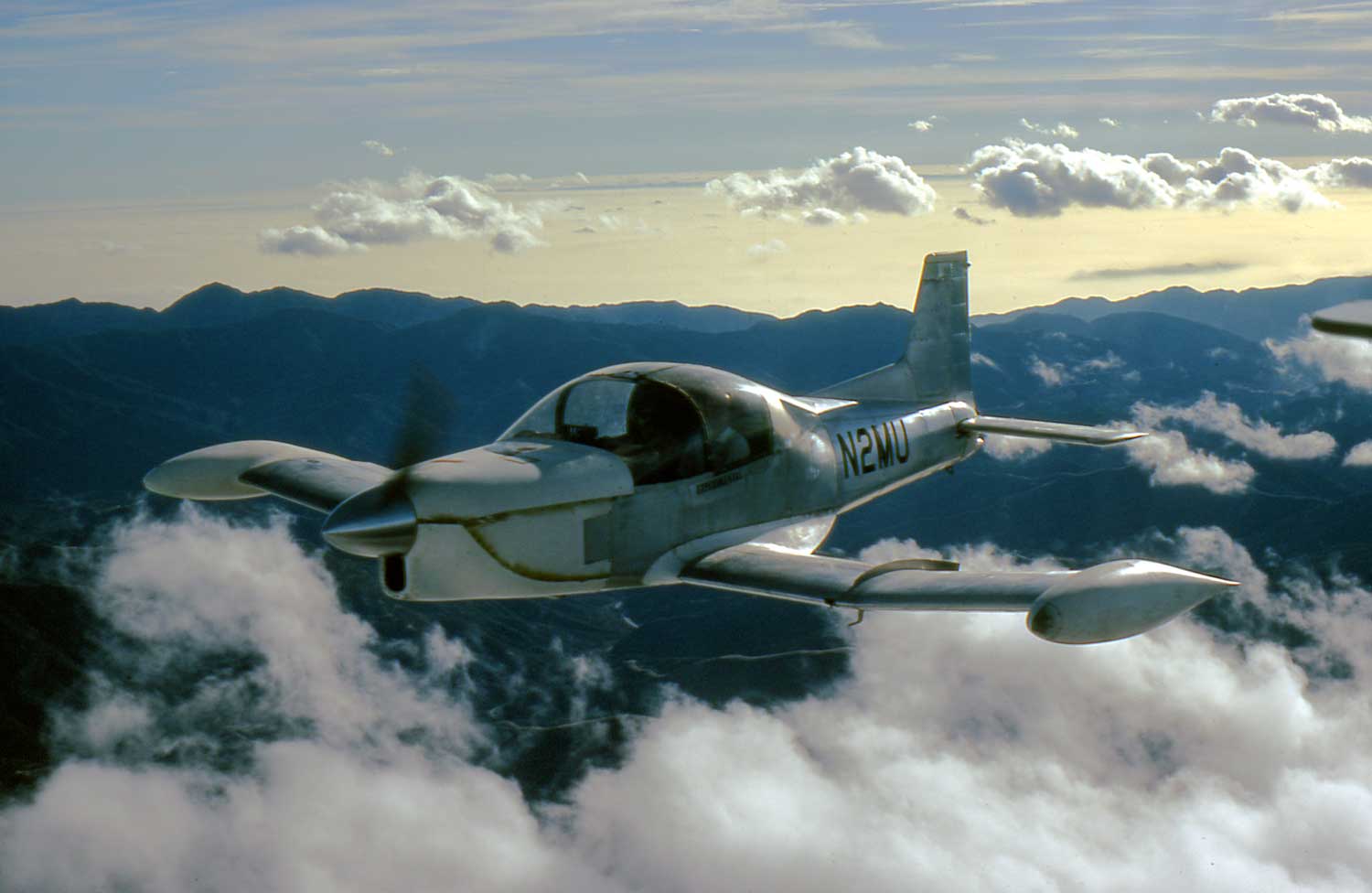
Melmoth 1 in Pictures

James Collison photo
Here is a miscellany of pictures from the period between 1966, when I began building a first, and abortive, long-range airplane, and 1982, when Melmoth 1 was wrecked.
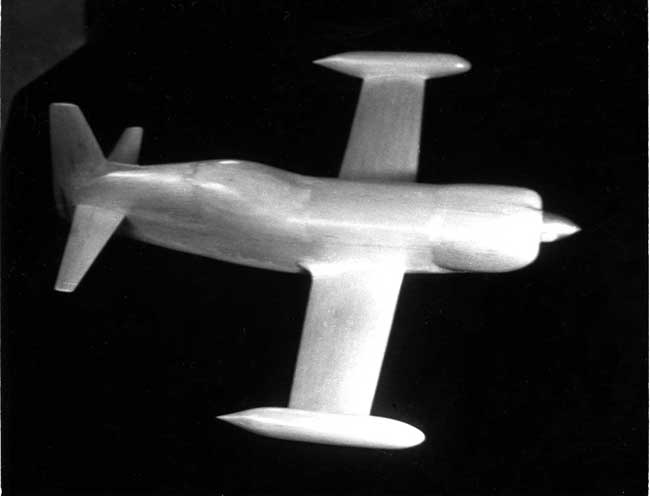 |
Melmoth's immediate precursor was a single-seat, 250-hp design called Tern, the Arctic Tern being a bird that migrates great distances. How I expected people to understand that the vowel was an e and not a u, I don't remember. Certain characteristics of the later Melmoth are already present, such as tip tanks, a wing of small area and relatively low aspect ratio, a horizontal tail of high aspect ratio, and insufficient vertical tail area. At this point I had only the dimmest conception of what the building of a complete airplane would involve, but I was dealing well enough with such questions as how to incorporate longitudinal curves into a sheet-metal fuselage.
|
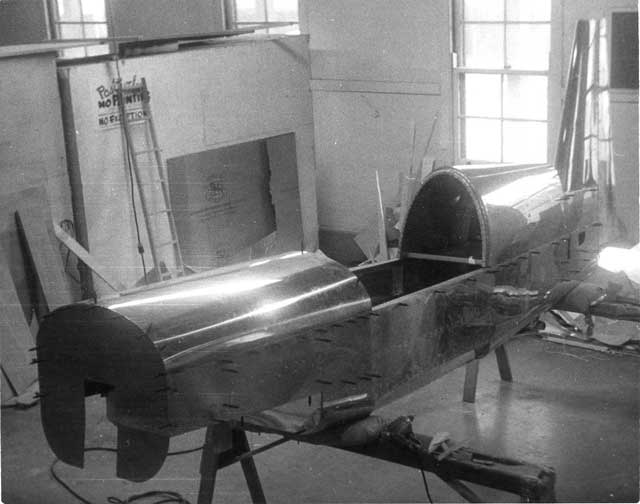 |
I began building Tern after being drafted into the Navy in 1965. (The Navy drafted a very small number of people during the Vietnam War, and I was one of them.) The workshop was at the Naval Training Center in San Diego, where I spent my entire military career. The airplane's stay there ended with mine; after a long time in storage, it found its way into a lot behind my house in Tarzana, California, where children used it as a target for rocks.
|
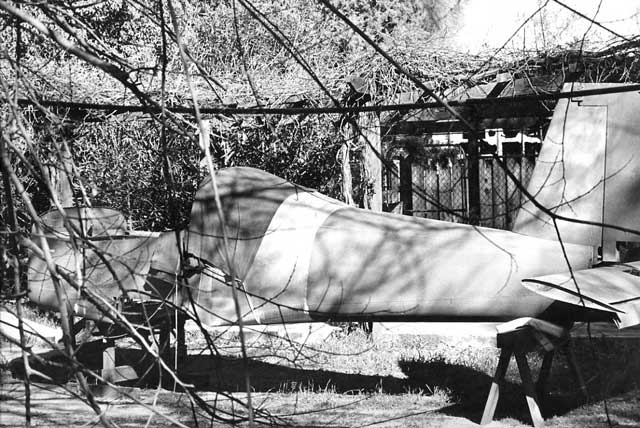 |
I began designing the first Melmoth while living in England in 1968-69, and began building it in Yucca Valley and Tarzana, California, in 1969. The airplane took shape out of doors; my workbench, drill press and bandsaw were sheltered in the tiny cabana of a disused swimming pool. The fuselage shape derived from that of the Pazmany PL-2, while the wing imitated the Thorp T-18's. John Thorp came by once or twice -- I did a lot of my metal-bending and cutting in his shop, which was at the opposite end of the San Fernando Valley from my house -- and remarked that the airplane was "built like a brick shithouse." It took me a while to figure out what this meant; the translation, I believe, was "stouter than it needs to be."
|
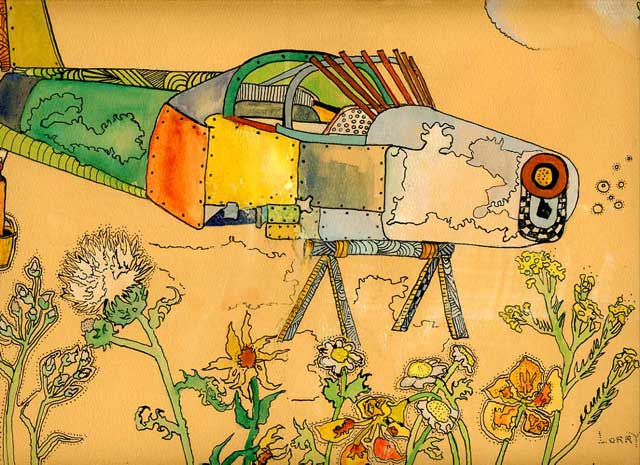 |
Some kids lived in a house behind ours. They took a lot of drugs and had a lot of fun. We covered for them when the FBI came by shilling for the draft board. One of the girls gave me this watercolor: Melmoth re-engined with Flower Power.
|
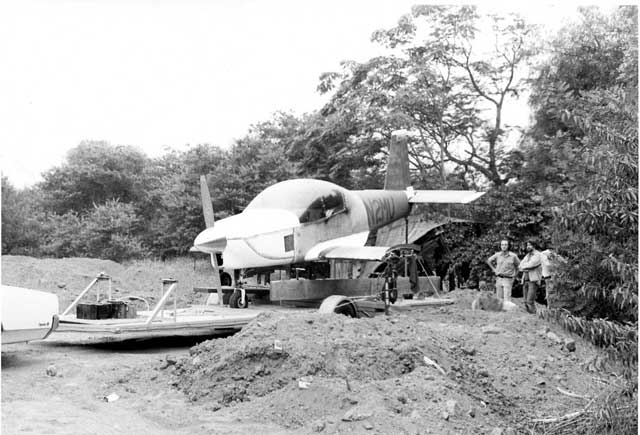 |
In September, 1973 Melmoth left the Tarzana backyard in which it had been for four years. I had already run the engine a number of times, no doubt to the delight of the apartment dwellers next door. Peter Lert borrowed his grandfather's Oldsmobile to tow the airplane, on a huge trailer, out to Mojave. I took my own car, picked up some hitchhikers, got lost, and arrived at Mojave long after the airplane.
|
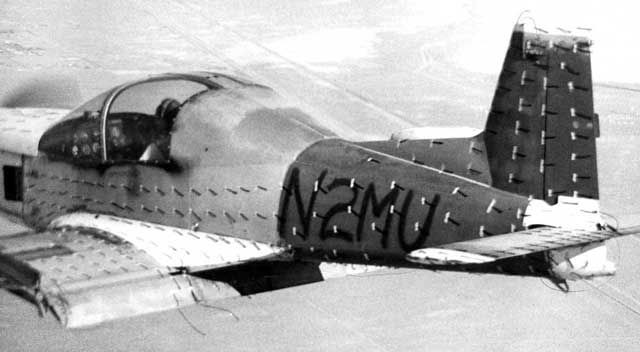 |
Early tuft testing at Mojave. The flap attachment and the downwash along the aft fuelage, as well as the separated flow below the stabilator and under the fuselage, were interesting. The confused flow below the stabilator affected the anti-servo tab and produced an unpleasant shaking of the stick when the flaps were down. I began thinking about a T tail only 11 days after the first flight. |
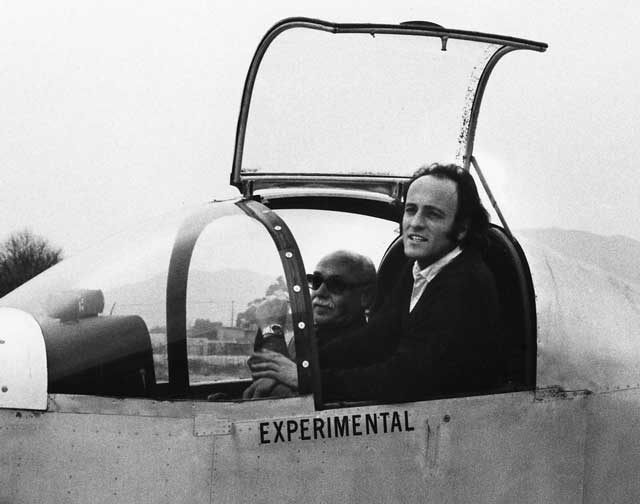 |
After I completed the required 25-hour testing period, the FAA let me take the airplane back to Whiteman on the condition that I would not fly it again thereafter until I had made it presentable. I accordingly stripped off the primer and replaced the graffiti-style registration numbers with stenciled ones. The distinguished gentleman in the right seat is the late Robert B. Parke, for a long time the editor of Flying Magazine. He always treated me with great kindness, and was supportive of the airplane project, running a series of articles called "Roll Your Own" chronicling the seemingly endless process of construction. I will always remember him with affection.
|
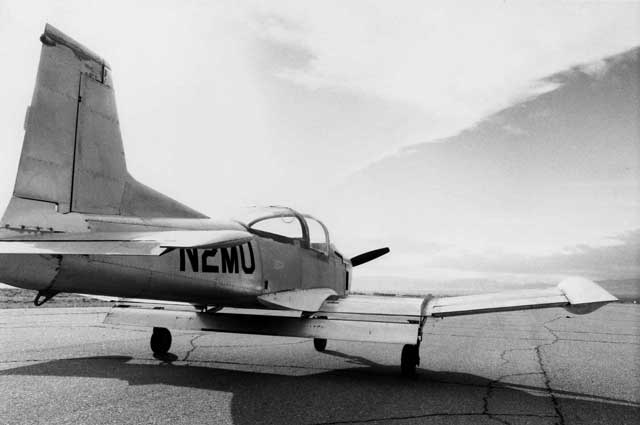 |
I kept a journal of flight testing for several months; reading it now, I am surprised by the number of problems I encountered. In January, 1974, I replaced the metal turtledeck behind the side windows with transparencies. This change made the cockpit a brighter and much pleasanter place. The journal ends, however, before I moved the stabilator to the top of the fin, a major modification of which I seem to have retained no record, photographic or otherwise.
|
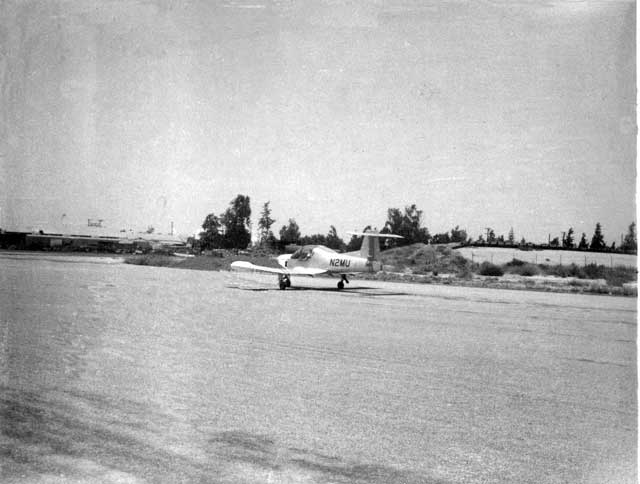 |
A while ago a stranger sent me this picture that he had snapped of the airplane taxiing at Whiteman, which was not then the busy, crowded airport it is today. At this point the T-tail modification had been done, but the airplane had not been painted; it must have been mid-1974. It appears that the rear windows had not yet been installed, but that is a trick of reflection, because (I am indebted to John Randall for pointing this out to me) a picture in my book Homebuilt Airplanes (like the photo above, which I dug up subsequently) shows Melmoth with the rear windows in place but the horizontal tail still on the fuselage.
|
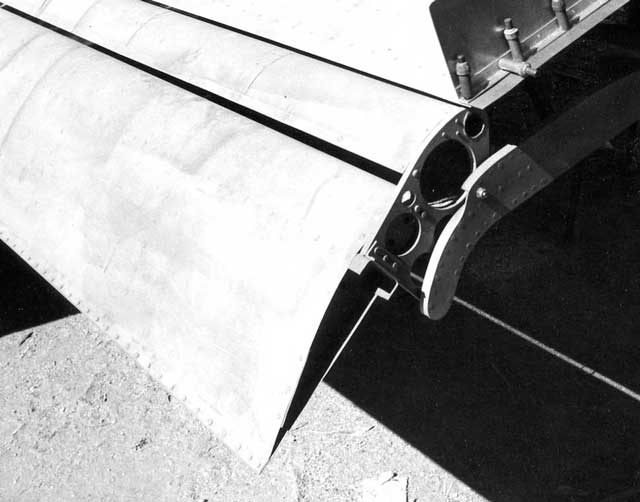 |
One of the most successful items in the design was the double-slotted Fowler flap, which translated aft to the wing trailing edge before deflecting 45 degrees. It enabled the airplane, which had a comparatively high wing loading (25 psf, typically), to land on short, rough strips by beaches in Baja California and grass fields near fancy restaurants in the south of France. The flap was one 12-foot-long piece, actuated by two hydraulic cylinders located in the wing roots. The fluid exhausted from one cylinder drove the other, which was slightly smaller in diameter to account for the volume displaced by the shaft of the first.
|
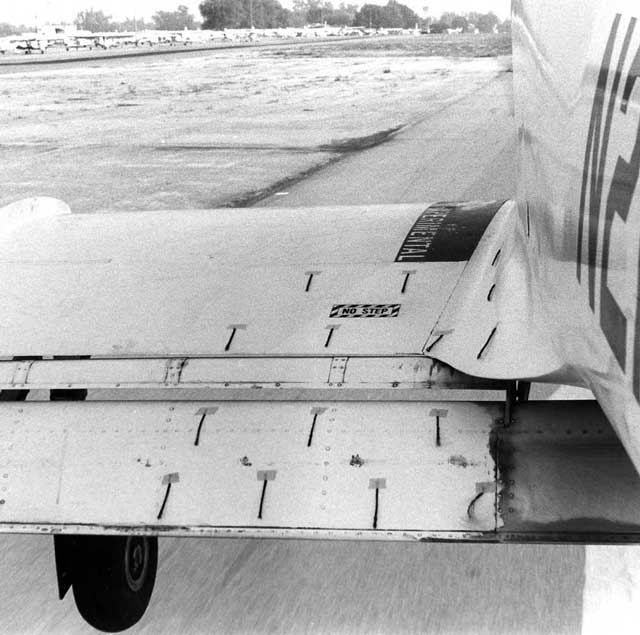 |
I mounted a camera on the tail of the airplane. With it I was able to document the flow attachment on the fully-deflected flap. This picture was taken while flaring to land at Whiteman. John Roncz comments that all wings have some separation at the maximum lift coefficient, and so this was not yet at the maximum. At any rate, the tufts look pretty steady.
|
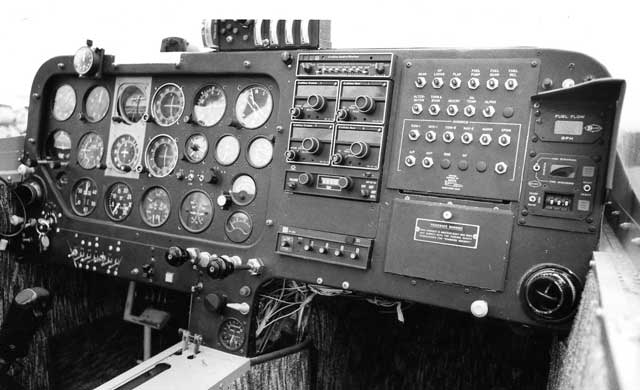 |
This was the form of the instrument panel in 1975, when we flew to Europe. I later added a DME to the radio stack. I still use the same Collins nav and comm radios, the audio panel and the transponder, but have shelved the ADF and DME, replacing both with a handheld GPS. The Southwestern Industries moving-airplane artificial horizon gave up the ghost soon after being installed in Melmoth 2. The little box sitting on top of the panel contained the angle of attack indicator, the gear position lights, and the four fuel gauges. At this stage, landing gear retraction was still managed with two switches, which are visible at the bottom of the panel just above the left rudder pedal. You first pushed the black rocker switch upward to take the weight of the gear off the up locks; with another finger you then pressed the square white button to withdraw the locks, and while holding that button down you switched the rocker in the other direction, pumping the gear down. Pilots with piano-playing experience soon got the hang of it. I later replaced this baroque design with a more conventional one in which the up locks retracted themselves and a single tire-shaped switch controlled everything. The system involved a great many solenoid valves; they worked reliably, but they weighed a lot.
|
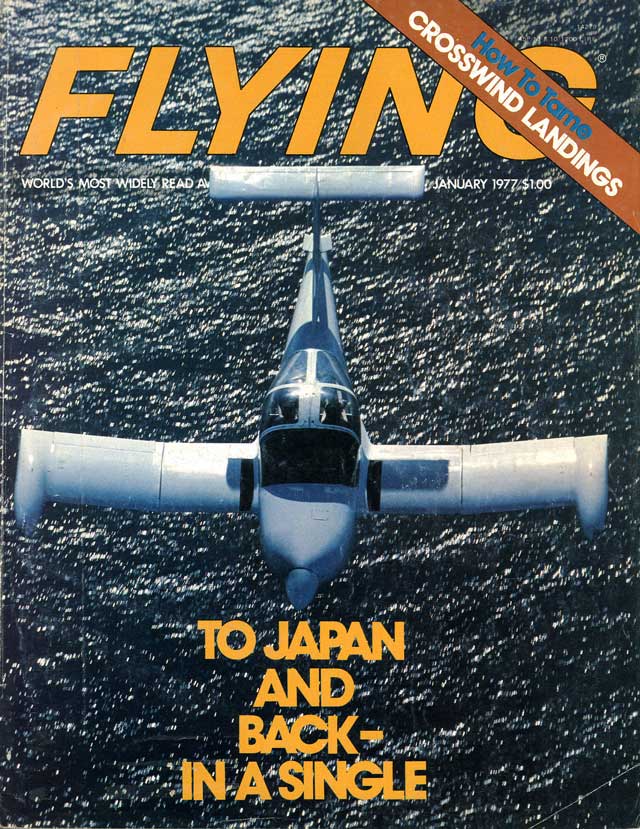 |
In 1976 Nancy and I flew from Cold Bay, Alaska nonstop to Chitose, Japan. The flight, 2,650 miles, took 14 hours and 45 minutes and consumed 125 gallons of fuel. Flying ran the account of the trip in two installments. In retrospect the whole project seems rather rash. It must have seemed even more so to our poor parents, but they kept their panic to themselves. I later tested our self-inflating raft in a swimming pool and found that it did not inflate. |
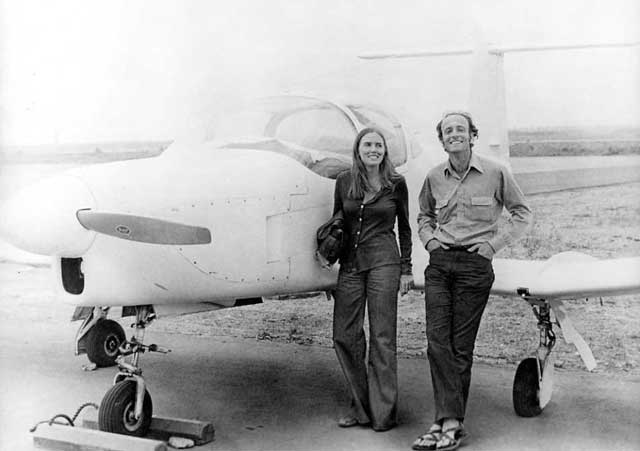 |
A reporter from the Asahi Shimbun of Tokyo, whose beat included the Chitose Airport, happened by after we landed and took our picture. It led to our appearing on a daytime TV show for housewives. The hostess seemed principally astonished that we had made the epic flight in street clothes. |
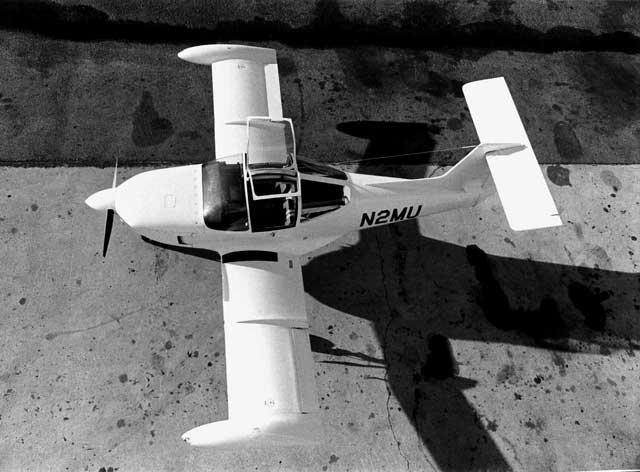 |
Melmoth went through a number of modifications. This was its classic, though not final, form, with 23-foot wingspan, tip tanks, and ADF antenna in place. The wing outer panels were wet, holding 42 gallons each; each tip tank held 35. When I installed a turbocharger in 1980, the top speed rose from 213 to 250 mph, but you had to be at an impractical altitude to achieve it.
|
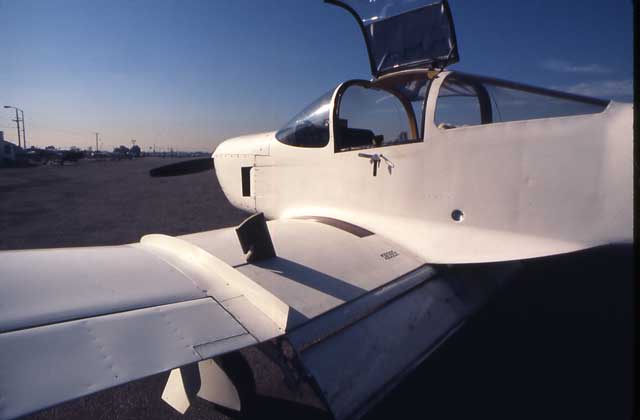 |
The original design included airbrakes on a parallelogram linkage, similar to those on many sailplanes. I built them, but I don't think I ever used them, because I became concerned that they would have a tendency to pop out on their own. I later installed a different type of brake in the existing slots; these rotated about a center pivot. Like the gear and flaps, they were actuated hydraulically. They popped out quite suddenly, to the discomfiture of passengers whom I neglected to forewarn. The light in the side of the fuselage illuminated the flaps at night; there was no flap position indicator on the panel.
|
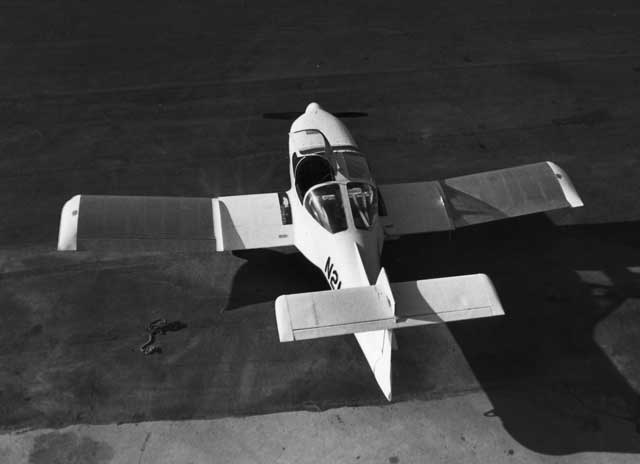 |
A year after installing the turbocharger, I replaced the wing outer panels and tip tanks with longer panels, extending the span to 28 feet, in order to improve high-altitude performance. It was a shame to lose the tip tanks, whose beaver tails and cambered shape, based on a NACA 66-series airfoil, gave the airplane much of its character.
|
 |
The seat back was originally a fixed structure which I imagined was required to enhance the torsional stiffness of the fuselage; eventually I removed it, without discernible detriment. The round black knob on the center console operated the drooping ailerons; the handle surrounded by red was the airbrake. What made me think that brown and Grey Poupon were agreeable interior colors, I don't know. Nancy hated them; others were too polite to comment.
|
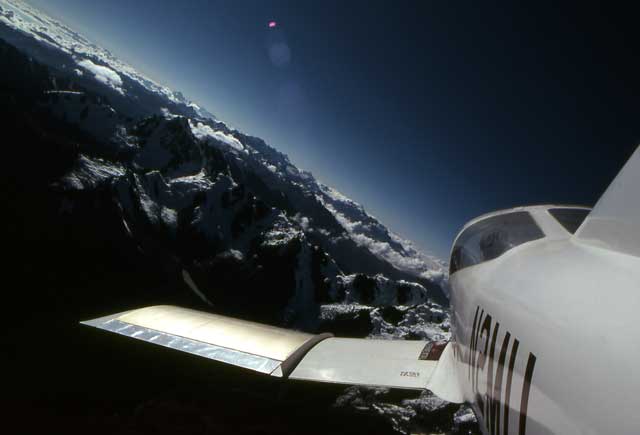 |
In 1979 Nancy and I flew to South America, visiting, among other places, Cuzco, high in the Andes, which we crossed at 20,000 feet. We descended as far as northern Chile. Returning northward, we flew nonstop from Lima to Bogota, a distance that suggested to the authorities in Colombia that we must have stopped off along the way to deliver drugs. My wretched Spanish eventually wore them down, and we escaped.
|
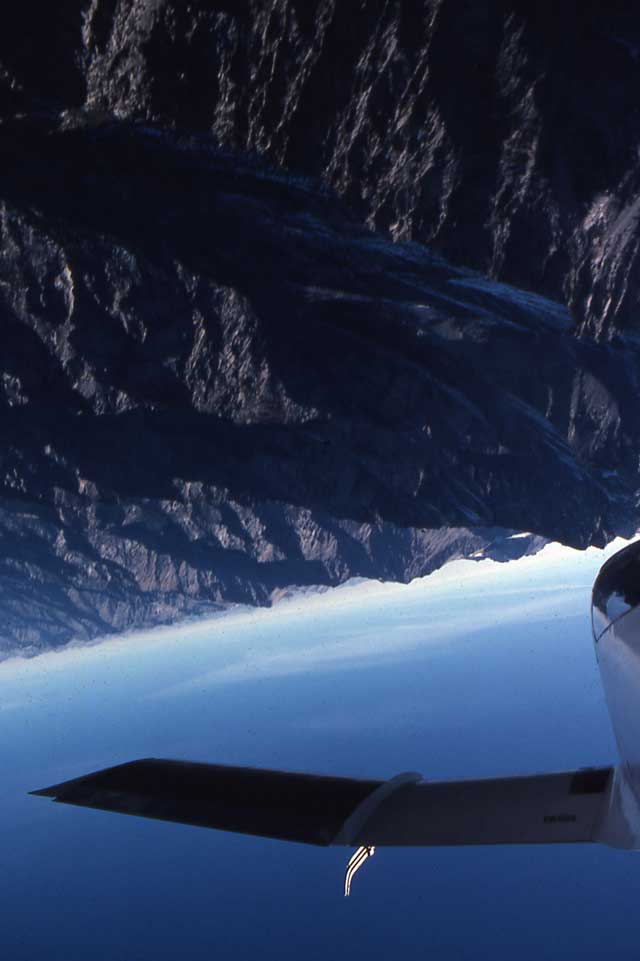 |
The new outer panels, although they increased the wing area, did not have a noticeable effect on speed. They did, however, improve the climb rate at altitude. One day I took a couple of friends (there was a jump seat behind the two front seats) for an air tour of the Sierra. I am not sure that they really enjoyed it. |
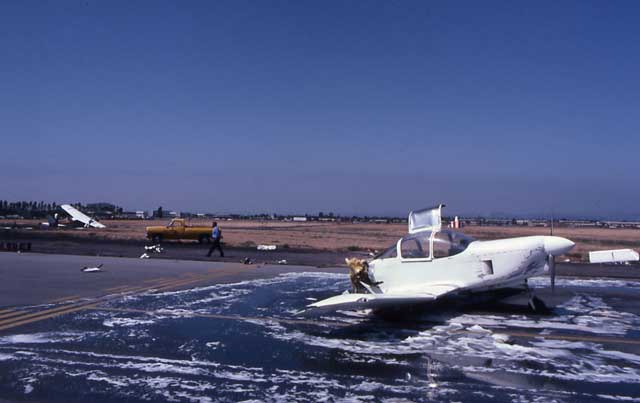 |
The career of Melmoth 1 ended, after nine years and 2,000 hours, at what is now John Wayne Airport in Orange County. I was holding short of the right runway waiting for takeoff clearance when a Cessna landing on the left went out of control and plowed through me. Both planes were totaled, but no one was hurt. |